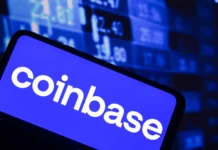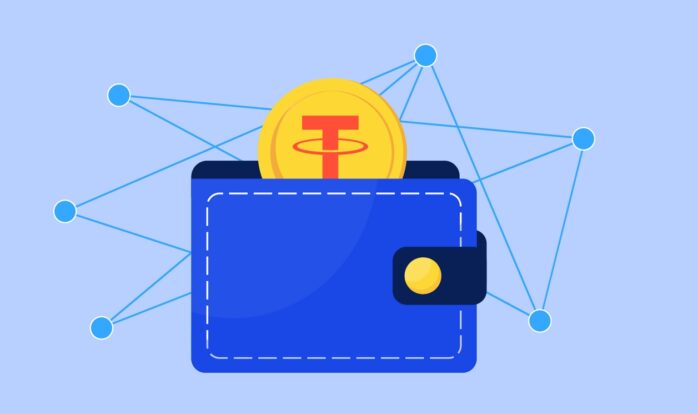
In the ever-evolving landscape of digital finance, USDT (Tether) has emerged as a cornerstone of stability amidst the volatility of the cryptocurrency market. This digital asset, pegged to traditional fiat currencies like the US dollar, provides traders, investors, and enthusiasts with a safe haven for their capital, ensuring value preservation in turbulent times.
The selection of a reliable and efficient wallet for USDT storage is not merely a convenience but a necessity for safeguarding one’s digital wealth. As we approach 2024, the importance of choosing the best USDT wallet cannot be overstated, given the advancements in blockchain technology and the increasing sophistication of cyber threats.
A wallet that supports the TRC20 protocol, often referred to as a TRC20 wallet, is particularly sought after for its efficiency in handling transactions on the TRON network, which is known for its speed and low transaction costs. This introduction aims to guide readers through the critical considerations and features that define a top-tier USDT wallet, setting the stage for a comprehensive exploration of options that meet the diverse needs of the modern cryptocurrency user.
With an emphasis on security, user experience, and future-proof technologies, we embark on a journey to identify the wallets that stand out in the crowded marketplace, ensuring your assets are both accessible and secure as the digital currency ecosystem continues to expand.
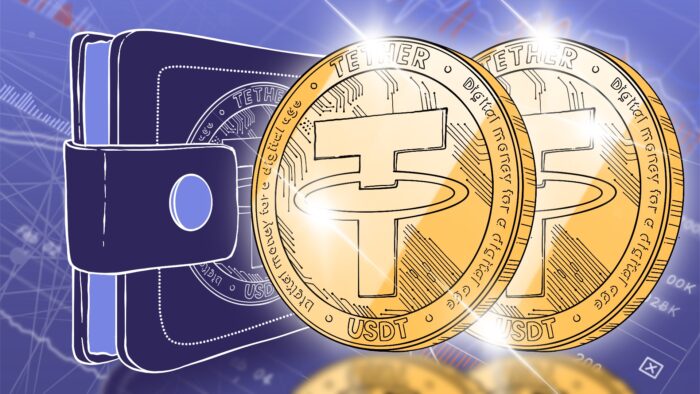
Why Choosing the Right Wallet is Crucial
In the digital age, where cryptocurrencies have become a significant part of our financial ecosystem, the imperative of selecting an appropriate wallet to store assets such as USDT (Tether) cannot be understated.
A wallet does more than just hold digital currencies; it is the gateway to your investments, offering both access and security to your digital wealth. The criteria for selecting a wallet go beyond mere preference, touching on vital aspects of financial security and operational efficiency.
Security is paramount in the cryptocurrency world. The right wallet offers robust defense mechanisms against unauthorized access, including advanced encryption protocols, secure private key management, and regular security updates to thwart potential cyber threats.
These features ensure that your assets remain protected in an environment where digital theft and hacking are prevalent concerns.
Moreover, the functionality and usability of a wallet play a critical role in managing digital assets effectively. A well-designed wallet interface allows for seamless transactions, real-time portfolio management, and easy access to market information, enhancing the user’s ability to respond to market changes swiftly.
Additionally, compatibility with various blockchains and support for multiple cryptocurrencies can significantly impact the flexibility and convenience of managing a diversified portfolio.
Choosing a wallet that aligns with your needs also means considering the wallet’s infrastructure for supporting transactions. For instance, wallets that facilitate TRC20 transactions offer the advantages of the TRON network’s high throughput and low fees, which are critical factors for frequent traders or those transacting large volumes of USDT.
In essence, the decision to select a specific wallet transcends mere preference, embedding itself in the strategic approach to safeguarding and optimizing your cryptocurrency holdings. It involves a careful evaluation of security features, user experience, and the wallet’s ability to adapt to the evolving landscape of digital finance.
This choice, therefore, is not just about storage but about empowering oneself with a tool that enhances and protects the value of one’s digital assets in the complex and dynamic world of cryptocurrency.

Types of USDT Wallets
Navigating the diverse landscape of USDT wallets requires an understanding of the various types available, each catering to different user needs and security preferences. The choice of a wallet is instrumental in shaping one’s cryptocurrency experience, influencing everything from transaction speeds to the level of security.
- Hardware Wallets are the epitome of security in the realm of cryptocurrency storage. These physical devices store private keys offline, offering an impenetrable fortress against online hacking attempts. Ideal for long-term investors seeking to safeguard significant amounts of USDT, hardware wallets like Ledger and Trezor feature robust security protocols, including pin codes and recovery phrases. Their physical nature, however, means that access to funds can be less convenient compared to other types of wallets, necessitating the device’s presence for transaction verification.
- Software Wallets, encompassing desktop and web-based options, offer a balance between security and convenience. Desktop wallets are installed on a personal computer, providing full control over the wallet’s keys and a moderate level of security, assuming the computer itself is secure from malware and hacking. Web-based wallets, on the other hand, are accessible through browsers, facilitating ease of access and quick transactions. The trade-off, however, is a higher risk exposure, as private keys are often stored online or managed by third parties.
- Mobile Wallets have surged in popularity, thanks to their convenience and user-friendly interfaces. Accessible from anywhere at any time, mobile wallets transform smartphones into digital banks. While they offer considerable security features, including biometric authentication and encrypted private keys, their connected nature to the internet and susceptibility to loss or theft necessitates rigorous security practices.
- Paper Wallets represent the most basic form of a cryptocurrency wallet, consisting of a physical copy or printout of public and private keys. Though considered highly secure since they are immune to online hacking attempts, paper wallets are vulnerable to physical damage and loss. Their use is best suited for those looking to store USDT with minimal interaction, in a “set and forget” fashion.
Each wallet type offers distinct advantages and disadvantages, catering to the diverse needs of the USDT community. From the ironclad security of hardware wallets to the unparalleled convenience of mobile solutions, understanding these options allows users to make informed decisions that align with their security requirements, lifestyle, and investment strategy.
Choosing the right type of wallet is a critical step in ensuring the safety, accessibility, and management of one’s digital assets, underpinning the overall experience in the digital currency ecosystem.
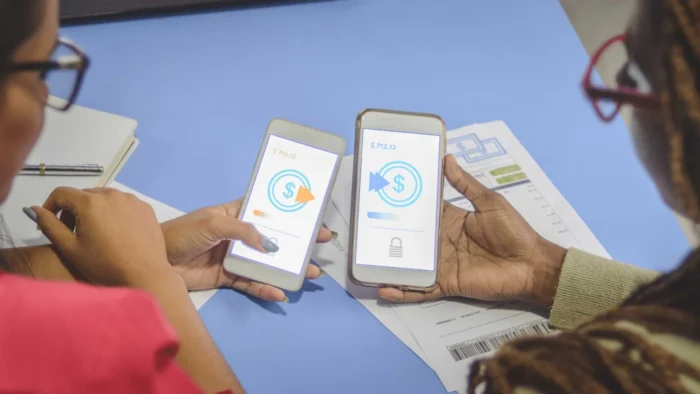
Key Features to Look for in a USDT Wallet
When venturing into the selection of a USDT wallet, discerning users prioritize a set of key features that not only enhance security but also enrich the user experience. These features form the backbone of a reliable wallet, ensuring that digital assets are not only safeguarded but are also accessible and manageable.
- Advanced Security Measures are paramount. A wallet’s primary role is the protection of funds, making features like two-factor authentication (2FA), end-to-end encryption, and multi-signature support non-negotiable. These layers of security ensure that access to the wallet is rigorously controlled, and transactions are authenticated by multiple parties when necessary, mitigating the risk of unauthorized access or fund misappropriation.
- Intuitive User Interface significantly impacts the usability of a wallet. A clean, easy-to-navigate interface simplifies the process of sending, receiving, and managing USDT, making the wallet accessible to users of all experience levels. The interface should provide clear, concise information about transaction histories, asset balances, and market values without overwhelming the user.
- Multi-Currency Support is a crucial feature for users looking to manage a diverse portfolio of digital assets beyond USDT. A wallet that supports various cryptocurrencies can streamline operations, allowing users to switch between assets seamlessly within a single environment. This capability is especially beneficial for those engaged in trading, investment diversification, or those who use multiple digital currencies for daily transactions.
- Reliable Customer Support becomes a lifeline in situations requiring prompt assistance, such as technical difficulties or security concerns. Access to knowledgeable and responsive customer service ensures that users can quickly resolve issues, minimizing potential disruptions to their access to funds.
- Regular Software Updates reflect the wallet developer’s commitment to security and feature enhancements. Frequent updates protect against evolving security threats and introduce improvements in functionality and user experience, ensuring the wallet remains compatible with new technologies and industry standards.
- Cross-Platform Compatibility enhances the flexibility of a wallet, allowing users to access their funds across various devices and operating systems. Whether through desktop applications, mobile apps, or web interfaces, the ability to manage USDT on multiple platforms provides convenience and continuity in asset management.
- Backup and Recovery Options are essential for recovering access to a wallet in case of device failure, loss, or theft. A robust backup mechanism, such as a recovery phrase or seed key, enables users to restore their wallets without losing their funds, ensuring that assets are retrievable under any circumstances.
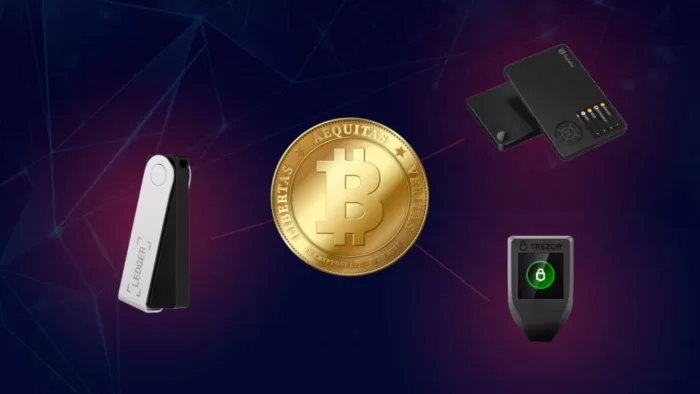
How to Secure Your USDT Wallet
Securing a USDT wallet transcends the selection of a wallet with robust security features; it encompasses a holistic approach involving both technological measures and disciplined user practices. The digital currency realm is fraught with risks, but adhering to stringent security protocols can significantly mitigate these threats, ensuring the safety of your digital assets.
- Implement Strong, Unique Passwords: The first line of defense for any USDT wallet is a strong, unique password. This password should be a complex blend of letters, numbers, and special characters, distinct from those used on other platforms. Utilizing a password manager can aid in generating and storing secure passwords without the risk of forgetting them.
- Activate Two-Factor Authentication (2FA): Enabling 2FA adds an additional layer of security, requiring a second form of verification beyond just the password. This could be a text message code, an email, or an authentication app. 2FA ensures that even if a password is compromised, unauthorized access to the wallet remains highly unlikely.
- Regularly Update Wallet Software: Wallet developers frequently release updates to address vulnerabilities and enhance security features. Keeping your wallet software up-to-date is crucial for protecting against emerging threats and exploits that could jeopardize your USDT.
- Educate Yourself on Phishing Scams: Cybercriminals often use phishing scams to trick individuals into revealing sensitive information. Be vigilant about unsolicited communications and double-check URLs to prevent falling victim to these schemes. Remember, legitimate wallet providers will never ask for your private keys or recovery phrases via email or text message.
- Utilize Multi-Signature Features: If your wallet supports it, activating multi-signature functionality can significantly enhance security. This feature requires multiple approvals for transactions, distributing the risk and making it harder for unauthorized users to move funds.
- Backup Your Wallet: Regularly backing up your wallet ensures that you can recover your assets in the event of a device failure, loss, or theft. This typically involves writing down a recovery phrase or seed key and storing it in a secure, offline location.
- Be Cautious with Wallet Exposure: Limit the exposure of your wallet by using separate wallets for daily transactions and long-term storage. Keeping a significant portion of your assets in a cold storage solution, such as a hardware wallet, minimizes the risk associated with online breaches.
- Monitor Wallet Transactions: Stay vigilant by regularly monitoring your wallet’s transaction history for any unauthorized activity. Early detection of suspicious transactions can be crucial in preventing further unauthorized access.
- Secure Your Devices: Finally, securing the devices you use to access your wallet is critical. This includes installing antivirus software, enabling firewalls, and avoiding the use of public Wi-Fi networks when accessing your cryptocurrency holdings.
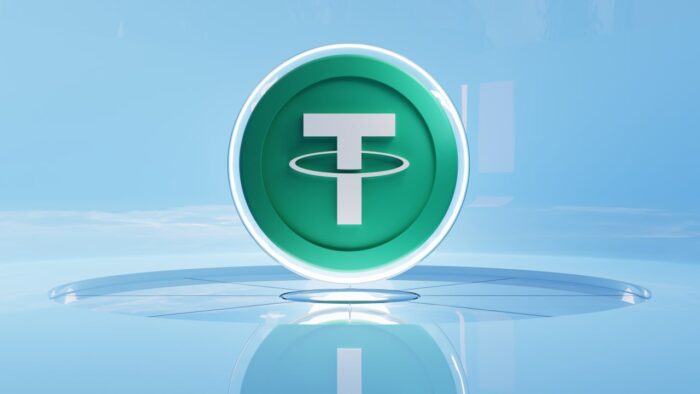
By incorporating these practices into your digital security regimen, you fortify your USDT wallet against a wide array of cyber threats. Remember, the security of your digital assets is not solely dependent on the technology of the wallet but also on the diligence and precautions taken by you, the user.
Choosing the best USDT wallet for the upcoming year is a decision that should not be taken lightly. The rapid evolution of the digital finance landscape demands a wallet that not only secures your assets against the multifaceted threats of the cyber world but also offers a seamless and efficient user experience.
From understanding the different types of wallets available to recognizing the key features that ensure robust security and operational convenience, this guide has aimed to equip you with the knowledge needed to make an informed choice.
Securing your USDT wallet extends beyond the initial selection process, requiring ongoing vigilance and adherence to best practices in digital security. The implementation of strong, unique passwords, regular software updates, and the education of oneself against phishing scams constitute the cornerstone of wallet security.
Furthermore, the utilization of features such as two-factor authentication, multi-signature transactions, and regular backups can significantly enhance the safety of your digital assets.
As we stand on the cusp of 2024, the importance of selecting a wallet that aligns with your specific needs—be it for trading, investment, or daily transactions—cannot be overstated. The right wallet not only protects your assets from external threats but also integrates seamlessly into your digital life, offering convenience and peace of mind.
In conclusion, the journey to selecting the best USDT wallet is both critical and personal. It involves balancing the trade-offs between security and convenience, the evaluation of features against personal requirements, and the adoption of a proactive stance on digital asset security.
By carefully considering these factors, you position yourself to navigate the digital currency ecosystem with confidence, ensuring your assets are both secure and accessible in the dynamic year ahead.


